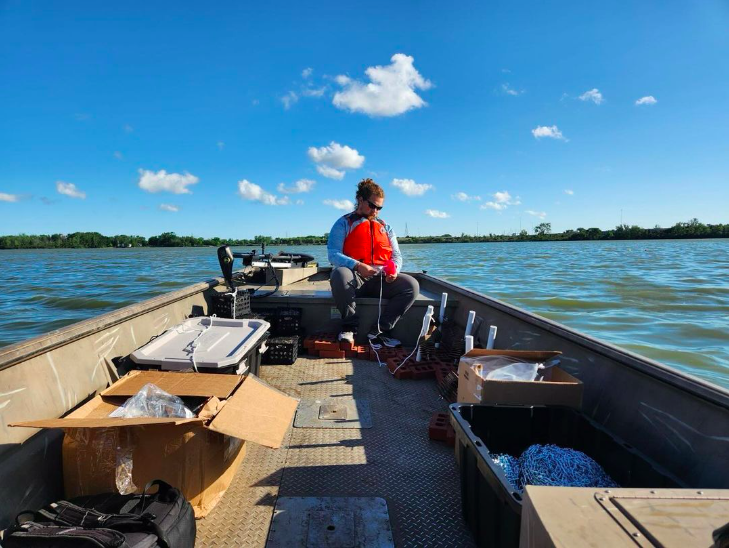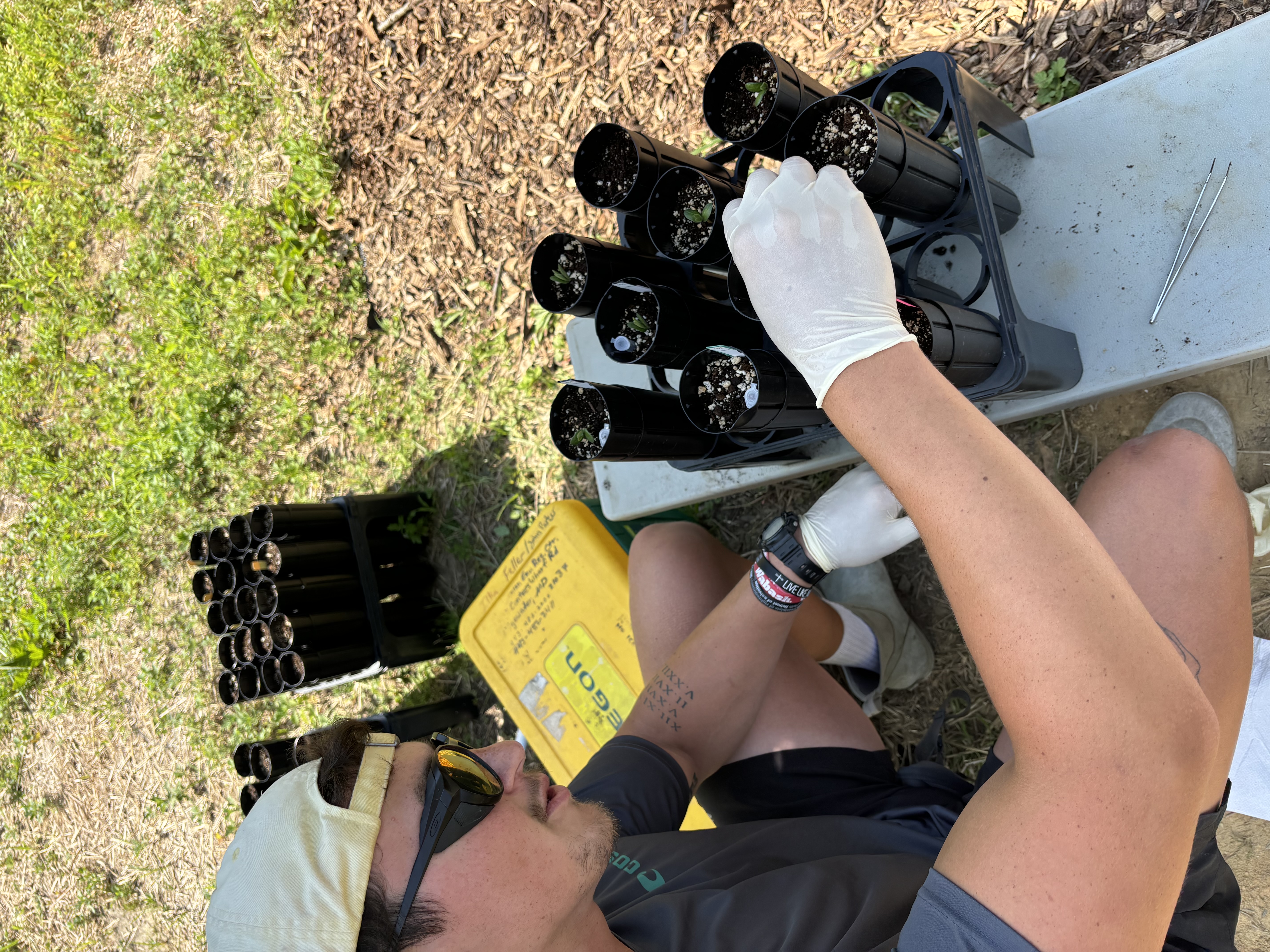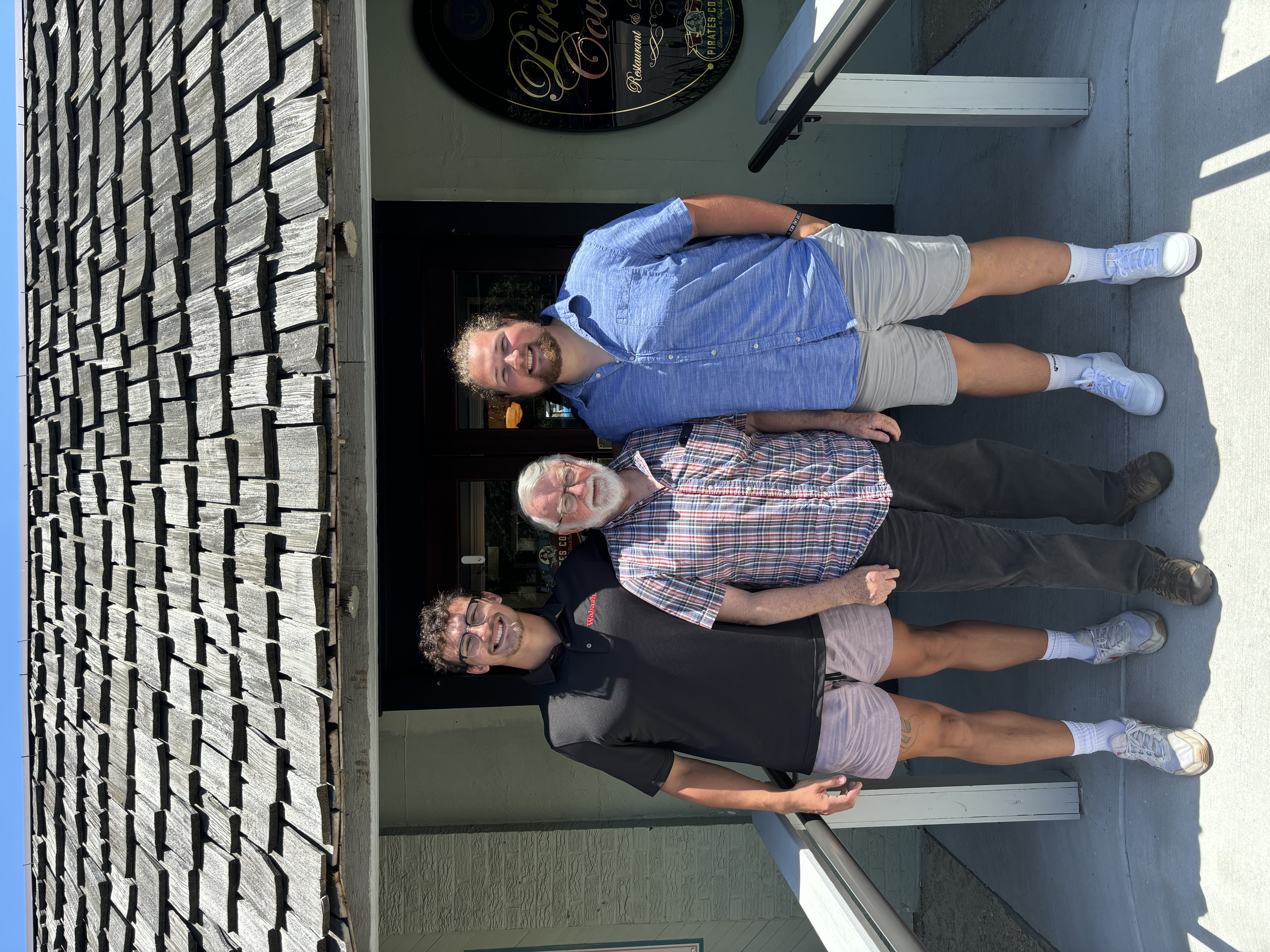Elijah Greene ’25 and Matthew Lepper ’25 spent the summer traveling, taking boating trips, getting their feet wet, and soaking up the sun—all in the name of scientific research.
Greene and Lepper both interned at the Smithsonian Environmental Research Center (SERC) in Edgewater, Maryland. SERC hires approximately 40 interns to work in 12 different labs to conduct research on coastal ecosystems.
 Greene worked for the Chesapeake Bay parasite project within the marine invasions lab, which is collecting data on mud crabs and a parasitic barnacle that infects them, inhibiting the crabs’ reproduction.
Greene worked for the Chesapeake Bay parasite project within the marine invasions lab, which is collecting data on mud crabs and a parasitic barnacle that infects them, inhibiting the crabs’ reproduction.
Lepper, who returned for his second year at SERC, worked in the terrestrial ecology lab as part of the largest tree study in the country. BiodiversiTree, as the project is called, conducts experiments on more than 14,000 trees to investigate how tree biodiversity affects ecosystem function.
“SERC is a magical place,” Lepper said. “The people here are just amazing—interns, staff, faculty—whoever it is, you're going to run into a like-minded individual who’s here to work. We're all trying to do our best, and everyone's supporting each other. It’s a lot like Wabash in that way.”
The idea for Wabash to send its best and brightest biology students to SERC came from Wabash alumnus and botanist Dennis Whigham ’66.
Whigham earned his PhD from the University of North Carolina and spent a few years teaching undergraduates. In 1977, he took a job with the Smithsonian and fell in love with it.
Whigham’s loyalty to the Wabash community runs deep, going back to his first ecology course with Professor Bob Petty. Petty served as a mentor for Whigham, helping him apply for graduate school and begin his scientific career. In a case of history repeating itself, Whigham himself became the one mentoring a new generation of biology students at Wabash.
 While visiting his alma mater in 2007 to deliver the Thomas Cole Lecture, Whigham suggested to the biology department that Wabash should fund an annual SERC internship as a way to extend research opportunities to students beyond campus.
While visiting his alma mater in 2007 to deliver the Thomas Cole Lecture, Whigham suggested to the biology department that Wabash should fund an annual SERC internship as a way to extend research opportunities to students beyond campus.
“SERC is one of the few places in the country where you can go and have the range of ecological studies that we do,” Whigham said. “The setting is a beautiful place, the laboratories are first class, the facilities are great, you can work outside. It’s just a great place to work.”
With partnerships all across the world, research done at SERC is shaping ecological choices and policymaking on a global level. Interns like Greene and Lepper get to play a hands-on role in making it happen.
“I feel like a part of the staff here,” Greene said. “I’m learning, I’m here to gain information, but I feel like I’ve been able to give back to my lab. At SERC, we’re expected to produce, and I love that. I love being in a place where my skills are respected, and where I have the opportunity to demonstrate those skills and the knowledge I've been building for three years as a biology major.”
Aside from providing a one-of-a-kind research opportunity, SERC puts an emphasis on teaching and developing skills interns can take back to college and into their futures. Every Friday, SERC offers professional development for its interns, with topics ranging from professional communication to graduate school information sessions. The program also affords opportunities for interns to visit other parts of the Smithsonian.
“One benefit of coming to the Smithsonian is it exposes them to research and to a different view of biology than they get at Wabash,” Whigham said. “It’s also a great cultural experience, because we get a wide variety of students from around the world.”
Once they are selected for the program, each intern is assigned to one of 12 labs, each encompassing multiple projects. In addition to their collaboration with the researcher-led project, each intern is expected to develop a personal project. Greene developed an educational video for his lab, and Lepper continued his individual project from last summer, investigating how microbes and environmental stressors can affect soybean growth. Both interns presented their work to the entire research center at the end of the summer.
 This year was one of the most competitive application cycles ever at SERC, with more than 1,000 students seeking a coveted spot. Thanks to the relationship Whigham helped establish, Wabash has sent a student to SERC every summer for more than a decade.
This year was one of the most competitive application cycles ever at SERC, with more than 1,000 students seeking a coveted spot. Thanks to the relationship Whigham helped establish, Wabash has sent a student to SERC every summer for more than a decade.
“These internships are like the cream of the crop when it comes to getting STEM experience as an undergrad,” Greene said. “They’re notoriously difficult to get into. I would credit the Wabash biology department—and the Wabash education as a whole—for putting forth quality scientific students to come work here. I don't think Dr. Whigham would have set it up if he and Wabash hadn't felt confident they could do that.”
While Greene and Lepper spent the summer conducting high-level research with some of the best scientists in the world, they both felt like it was a natural fit.
“I remember coming back from SERC last summer and telling my professors how well prepared I was from my Wabash experiences,” Lepper said. “If not for Wabash, I wouldn't have the slightest clue how to function at SERC, but because of our great biology department, our great staff, and our great experiences, I can bring a certain confidence knowing I’m capable and qualified.”